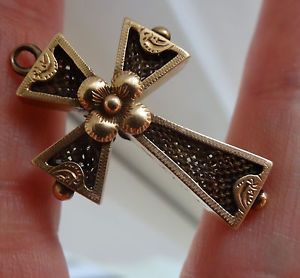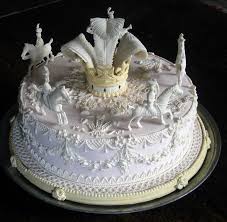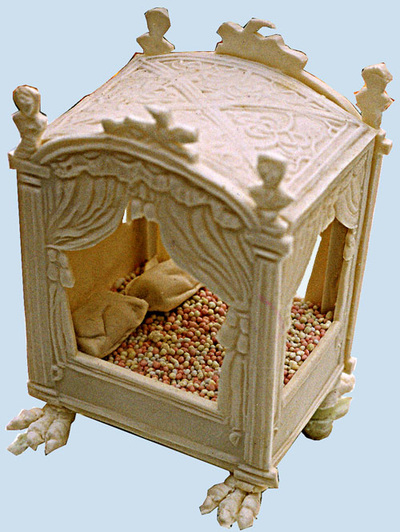Grace: Be careful what you eat...
The Penny Heart is the narrative of two women with hugely different backgrounds and sensibilities. It is written in two alternating voices, firstly by Grace, a sensitive and artistic young wife who finds herself at isolated Delafosse Hall. Horribly attracted to her selfish husband, vulnerable and alone, she paints miniature portraits embellished with strands of hair.
Human hair braiding became a popular hobby, as books offered advice on how to create complex pictures of flowers, feathers and landscapes. When her mother dies, Grace commemorates her by braiding her hair using equipment similar to a lace-making table. She has this net-like memento set into a silver crucifix, from which she draws strength and a sense of connection to her mother's spirit.
Grace's relationship to Mary (or Peg as she knows her) begins with respect for her as a capable Cook Housekeeper. Over time she moves from dependence to pity and terror.
An inspiration for this situation was a story my mother told me about the Dutch colonials who first arrived in Java (Indonesia, formerly the Dutch East Indies) where she was born. The men often took an informal local wife, but when their Dutch wives arrived, the local woman might become their cook. My mother described the danger of this, as the cook would occasionally try to poison her rival. This led me to write Grace’s opening warning:
‘I fancy you think little of who makes the food you eat. Thrice a day it appears; you ingest it with more or less pleasure. Do you honestly know whose fingers touched it? Do you give a moment’s attention to the mind that devised your dish, its method and ingredients?’
In the United States the novel is titled A Taste for Nightshade, reflecting Peg's fascination with such sinister additives such as the nightshade seeds and other dangerous foods that fascinate her.
An inspiration for this situation was a story my mother told me about the Dutch colonials who first arrived in Java (Indonesia, formerly the Dutch East Indies) where she was born. The men often took an informal local wife, but when their Dutch wives arrived, the local woman might become their cook. My mother described the danger of this, as the cook would occasionally try to poison her rival. This led me to write Grace’s opening warning:
‘I fancy you think little of who makes the food you eat. Thrice a day it appears; you ingest it with more or less pleasure. Do you honestly know whose fingers touched it? Do you give a moment’s attention to the mind that devised your dish, its method and ingredients?’
In the United States the novel is titled A Taste for Nightshade, reflecting Peg's fascination with such sinister additives such as the nightshade seeds and other dangerous foods that fascinate her.
The picture on the left is of a Twelfth Cake created by Ivan Day; contemporary recipes suggest that bride-cakes may have looked similar. Grace's fragile marriage is symbolized by the tiny sugarwork wedding bed on the right, that would have been used as a cake ornament. It is decorated with two sugar pillows and an eiderdown of multicoloured comfits. Other sugar devices in the novel include a tiny cradle and swaddled baby. Just as we might treasure the 'cake-topper' from a wedding or Christmas cake, these are symbols of hope and fecundity. In the novel however, they do have a double-edge; though beautiful objects, they are in the end fragile, lifeless, and of course ultimately edible.



